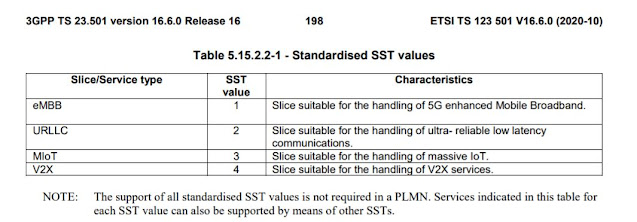1. 4 --> System Procedure
a. 4.2 Connection , Registration and Mobility Management Procedures
i. 4.2.2 Registration Management procedures
1) 4.2.2.2 Registration procedures
a) 4.2.2.2.2 General Registration
b) 4.2.2.2.3 Registration with AMF re-allocation
c) 4.2.2.2.4 Registration with Onboarding SNPN
(Standalone Non Public Network - Means Standalone Private NW)
2) 4.2.2.3 Deregistration procedures
a) 4.2.2.3.2 UE-initiated Deregistration
b) 4.2.2.3.3 Network-initiated Deregistration
ii. 4.2.3 Service Request procedures
1) 4.2.3.2 UE Triggered Service Request
2) 4.2.3.3 Network Triggered Service Request
iii. 4.2.4 UE Configuration Update
1) 4.2.4.2 UE Configuration Update procedure for access and mobility management related parameters
2) 4.2.4.3 UE Configuration Update procedure for transparent UE Policy delivery
iv. 4.2.5 Reachability procedures
v. 4.2.6 AN Release
vi. 4.2.7 N2 procedures
vii. 4.2.8 Void
viii. 4.2.8a UE Capability Match Request procedure
ix. 4.2.9 Network Slice-Specific Authentication and Authorization procedure
x. 4.2.10 N3 data transfer establishment procedure when Control Plane CIoT 5GS Optimisation is enabled
xi. 4.2.11 Network Slice Admission Control Function (NSACF) procedures
b. 4.3 Session Mangement Procedures
c. 4.4 SMF and UPF Interactions
d. 4.5 User Profile Management Procedures
e. 4.6 Security Procedures
f. 4.7 ME Identity Check Procedures
g. 4.8 RAN-CN Interactions
h. Handover Procedures
i. 4.10 NG-RAN Location reporting procedures
j. 4.11 System interworking procedures with EPC
k. 4.12 Procedures for Untrusted non-3GPP access
l. 4.12a Procedures for Trusted non-3GPP access
m. 4.12b Procedures for devices that do not support 5GC NAS over WLAN access
n. 4.13 Specific services
o. 4.14 Support for Dual Connectivity
p. 4.15 Network Exposure
q. 4.16 Procedures and flows for Policy Framework
r. 4.17 Network Function Service Framework Procedure
s. 4.18 Procedures for Management of PFDs
t. 4.19 Network Data Analytics
u. 4.20 UE Parameters Update via UDM Control Plane Procedure
v. 4.21 Secondary RAT Usage Data Reporting Procedure
w. 4.22 ATSSS Procedures
x. 4.23 Support of deployments topologies with specific SMF Service Areas
y. 4.24 Procedures for UPF Anchored Data Transport in Control Plane CIoT 5GS Optimisation
z. 4.25 Procedures for NEF based Non-IP Data Delivery
aa. 4.26 Network Function/NF Service Context Transfer Procedures
bb. 4.27 Procedures for Enhanced Coverage Restriction Control via NEF
2. 5 --> Network Function Procedure
a. 5.1 Network Function Service framework procedures
b. 5.2 Network Function services













